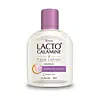What's inside
What's inside
 Key Ingredients
Key Ingredients

 Benefits
Benefits

 Concerns
Concerns

 Ingredients Side-by-side
Ingredients Side-by-side

Water
Skin ConditioningEthylhexyl Methoxycinnamate
UV AbsorberButyl Methoxydibenzoylmethane
UV AbsorberBenzophenone-3
UV AbsorberPEG-100 Stearate
Butylene Glycol
HumectantPhospholipids
Skin ConditioningPhenoxyethanol
PreservativeGlycerin
HumectantEthylhexylglycerin
Skin ConditioningNiacinamide
SmoothingXanthan Gum
EmulsifyingLecithin
EmollientSclerotium Gum
Emulsion StabilisingPullulan
Sodium Acrylates Copolymer
Allantoin
Skin ConditioningDisodium EDTA
Water
Skin ConditioningKaolin
AbrasiveRicinus Communis Seed Oil
MaskingGlycerin
HumectantZinc Oxide
Cosmetic ColorantZinc Carbonate
PEG-100 Stearate
Glyceryl Stearate
EmollientPolysorbate 80
EmulsifyingHamamelis Virginiana Extract
AntiseborrhoeicCetearyl Alcohol
EmollientXanthan Gum
EmulsifyingPhenoxyethanol
PreservativeChlorphenesin
AntimicrobialParfum
MaskingCI 77491
Cosmetic ColorantCI 15850
Cosmetic ColorantCitronellol
PerfumingCoumarin
PerfumingLinalool
PerfumingBenzyl Alcohol
PerfumingHydroxycitronellal
PerfumingCinnamyl Alcohol
PerfumingAmyl Cinnamal
PerfumingIsoeugenol
PerfumingGeraniol
PerfumingBenzyl Salicylate
PerfumingBenzyl Cinnamate
PerfumingBenzyl Benzoate
AntimicrobialEugenol
PerfumingLimonene
PerfumingWater, Kaolin, Ricinus Communis Seed Oil, Glycerin, Zinc Oxide, Zinc Carbonate, PEG-100 Stearate, Glyceryl Stearate, Polysorbate 80, Hamamelis Virginiana Extract, Cetearyl Alcohol, Xanthan Gum, Phenoxyethanol, Chlorphenesin, Parfum, CI 77491, CI 15850, Citronellol, Coumarin, Linalool, Benzyl Alcohol, Hydroxycitronellal, Cinnamyl Alcohol, Amyl Cinnamal, Isoeugenol, Geraniol, Benzyl Salicylate, Benzyl Cinnamate, Benzyl Benzoate, Eugenol, Limonene
Ingredients Explained
These ingredients are found in both products.
Ingredients higher up in an ingredient list are typically present in a larger amount.
Glycerin is already naturally found in your skin. It helps moisturize and protect your skin.
A study from 2016 found glycerin to be more effective as a humectant than AHAs and hyaluronic acid.
As a humectant, it helps the skin stay hydrated by pulling moisture to your skin. The low molecular weight of glycerin allows it to pull moisture into the deeper layers of your skin.
Hydrated skin improves your skin barrier; Your skin barrier helps protect against irritants and bacteria.
Glycerin has also been found to have antimicrobial and antiviral properties. Due to these properties, glycerin is often used in wound and burn treatments.
In cosmetics, glycerin is usually derived from plants such as soybean or palm. However, it can also be sourced from animals, such as tallow or animal fat.
This ingredient is organic, colorless, odorless, and non-toxic.
Glycerin is the name for this ingredient in American English. British English uses Glycerol/Glycerine.
Learn more about GlycerinPeg-100 Stearate is an emollient and emulsifier. As an emollient, it helps keep skin soft by trapping moisture in. On the other hand, emulsifiers help prevent oil and water from separating in a product.
PEGS are a hydrophilic polyether compound . There are 100 ethylene oxide monomers in Peg-100 Stearate. Peg-100 Stearate is polyethylene glycol ester of stearic acid.
Phenoxyethanol is a preservative that has germicide, antimicrobial, and aromatic properties. Studies show that phenoxyethanol can prevent microbial growth. By itself, it has a scent that is similar to that of a rose.
It's often used in formulations along with Caprylyl Glycol to preserve the shelf life of products.
Water. It's the most common cosmetic ingredient of all. You'll usually see it at the top of ingredient lists, meaning that it makes up the largest part of the product.
So why is it so popular? Water most often acts as a solvent - this means that it helps dissolve other ingredients into the formulation.
You'll also recognize water as that liquid we all need to stay alive. If you see this, drink a glass of water. Stay hydrated!
Learn more about WaterXanthan gum is used as a stabilizer and thickener within cosmetic products. It helps give products a sticky, thick feeling - preventing them from being too runny.
On the technical side of things, xanthan gum is a polysaccharide - a combination consisting of multiple sugar molecules bonded together.
Xanthan gum is a pretty common and great ingredient. It is a natural, non-toxic, non-irritating ingredient that is also commonly used in food products.
Learn more about Xanthan Gum